|
The Church of
San Sisinio
|
|
|
|
|
The
Nave
The
three span nave is divided by polished plaster marble pillages and its
capitals are shaped so as to give the impression of cloth hanging. The
pavement is strikingly ascendant, there are nine family tombs: that of
the Torrianis, of the Bosia and of the Torriani-Albrici as well as that
of the Confalonieri family. They all bear the family’s coat of arms
and are dated 15th
Century
except for that of the
latest tomb which is dated 1791.
The
frescoes on the nave were done by painter Giovanni Battista Bagutti
(1742-1823).
The themes used
by him are to be found also in the Church of San Giovanni. The animated
scene painting has bright colours, An 1816 memorial plaque gives us the
date when the decorations were accomplished |
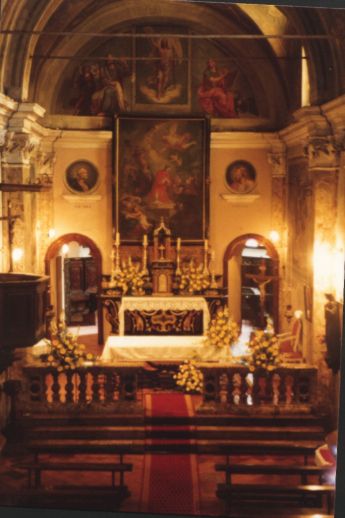
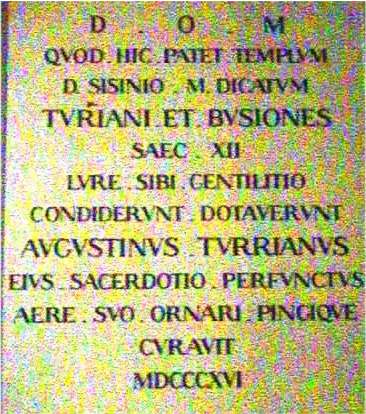
|
|
Frescoes
Along
the naves’ walls one can admire four vast frescoes. Two were painted by Francesco
Catenazzi (1774-1830) His pupils probably helped him.
|
Both
works give way to the popular taste for dramatics characterised by an
expressive passion. In contrast, the sides of the frescoes represent the
calm poise of the characters. The pale colouring introduces us to
the 17th Century naturalism while the refined balance clearly belongs to
the new neo-classical style |
|
Saint
Ambrogio and Emperor Teodosio
This
fresco describes an episode which occurred in the year 390 a.C.
Having defeated the population of Tessalonica, Emperor Teodosio heads
towards the door of the church only to find that Saint Ambrogio will not
allow him to enter and have access to the Holy Sacraments until he makes
an act of contrition.
|
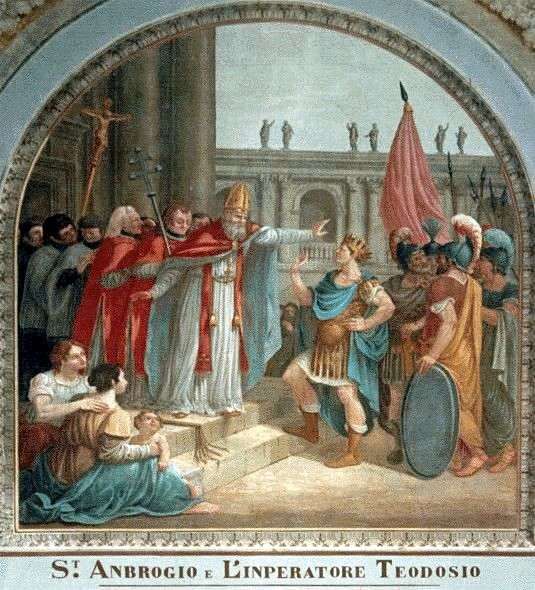 |
|
Saint
Agostino and the heretic Fausto
Saint
Agostino was a great Christian philosopher,and he is shown here as he
contradicts Fausto’s heretic Manicheism which was very much believed
in during the first centuries of our era.
|
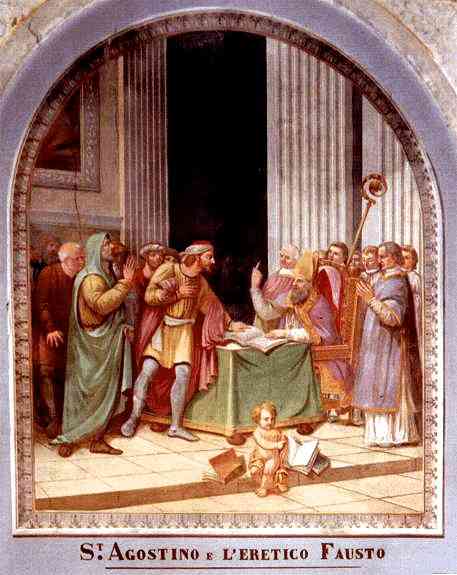 |
|
and
two frescoes by Abbondio Bagutti (1788-1850) son of Giovanni
Battista
|
Bagutti
had a very strong academic preparation which expresses itself in the
neo-classical style of his times. The figures are idealized, the very
eloquent gestures seem poised.. Details and composition are very neatly
organised, and the colouring has a pearl like vividness. |
|
San
Vigilio and the martyrs.
The
Bishop finds the bodies of the martyr saints Sisinio, Martirio and
Alessandro ,assassinated in Val di Non, and he starts to convert the
local pagans to Christianity
|
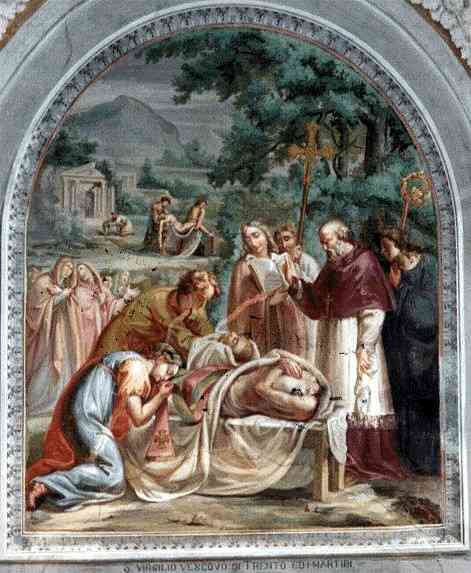 |
|
Saint
Charles and Saint Sisinio’s relics
Giuseppe
Martinola reads the fresco as the representation of an event that
occurred in 1582: Saint Charles Borromeo finds the body of San Sisinio
in Milan. San Sisinio has performed the miracle of making an old blind
man see again. Mario Medici believes that the scene represented
took place in the 4th Century and that the blind man was healed while in
the presence of Bishop Saint Simpliciano, , the relics of San Sisinio
were being taken to Milan.
|
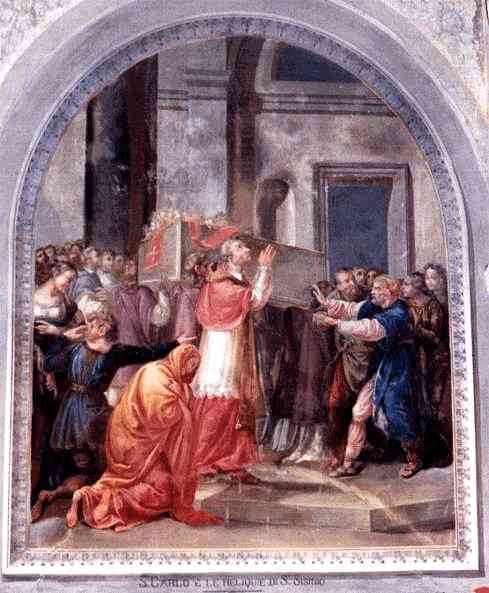 |
|
The
vault also has frescoes of typical neo-classical inspiration which
represent the glory of San Sisinio and of his companions Martirio and
Alessandro Giovan
Battista Bagutti and his pupil Pocconi were the authors of this
frescoes. |
|
 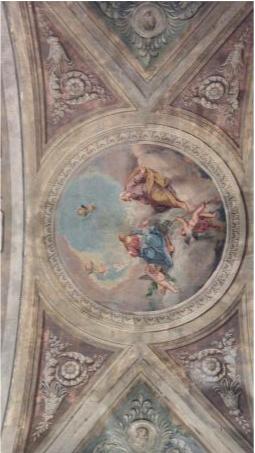
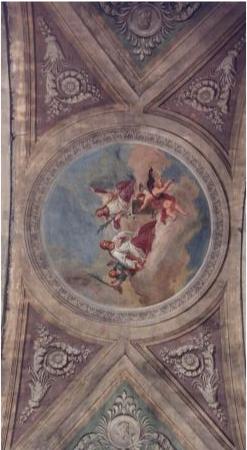
|